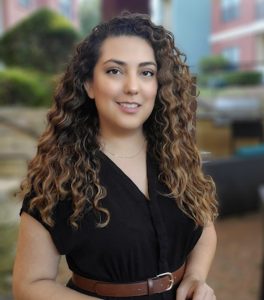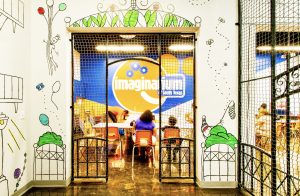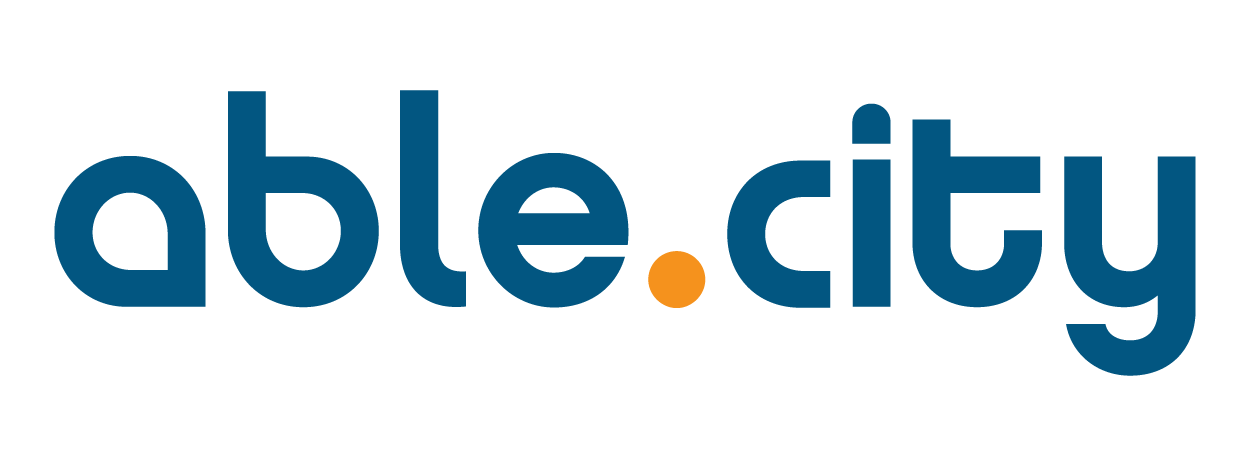Edna Zepeda is an Associate at Able City. Her favorite thing about Able City “is the people,” and in general, her answers consistently find a way back to an awareness and care toward others. This focus on relationality extends to her design, where she centers people’s lived experience in a space, defining success in terms of how a building makes someone feel.
See our Q-and-A for more on Edna’s background, approach to architecture, and practice of staying curious.

Able City (AC): Let’s start at the beginning — what led you initially into becoming an architect?
Edna Zepeda (EZ): I was interested in a lot of things growing up. I wanted to be a doctor, a business person, a writer. An architect came to visit my high school, and I thought, this might be good: architecture was artistic, but technical.
I talked to my parents about it, and my dad sold me on it by talking about how this was a very gentle profession that I could adapt to many different lifestyles by taking a light or heavy load as I wished and where I could work independently or within a firm. He made it sound very flexible and stress-free. Later in life I asked my Dad, did you even know an architect? I went through all his friends and found out no, he didn’t! He told me, I have friends who are engineers and that’s what everybody said [laughs]… I’d been misled!
I was right though, in that architecture is creative, and it does take a lot of skills. You have to be creative not just in design, but in problem-solving. It helps to be good at organizing: putting things in order, ideas in order, processes in order. That’s where I feel fulfilled within projects — when I can help make things better, and more clear.
AC: Would you say you’re naturally organized?
EZ: This is not my home [gestures to Zoom background of a color-coordinated bookshelf]. I wish it was. Organizing is a strength I discovered I had later in life. I remember hearing once, if you want to know what you’re good at, ask your friends. I did, and it was there in the top 5. My friends would tell me I was organized because I would try to organize their stuff, whether it be a class schedule, a trip or their calendar.
AC: What would you say are other qualities you bring to your work? I know your bio mentions phenomenology – do you want to explain more about where that comes in to architecture for you?
EZ: Phenomenology hasn’t been explored as much as it should be: it focuses on the actual experience a person has. To me that’s important because there are some spaces that you may rationalize a certain way — but the person experiencing your space, did they get that? The design process tends to focus around shape, form and function, but it often disregards the emotional unconscious experience of the end-user. I try to think about what a person with no architectural knowledge will experience. Great architectural relationships, if un-perceived by the user, ceases to exist in the conscious realm.
AC: Are there examples of that in your work?
EZ: The Children’s Museum in Laredo. It was a tiny project with a limited budget. They were relocating and it was an opportunity for the Museum to get better things and a better layout, but it was still a modest amount. But I wanted to do it.
That museum has been around Laredo for a long time and I still have a very vivid memory of going to it when I was little and it was located on LCC grounds. I remember the space clearly. I remember what I played with, and how I felt.
I said to the partners, I really want to do this. My co-worker Ellie and I made a great team — we would be thinking about colors, and how you move around in it. … We wanted to do a little town, and a town should have a library, and a plaza, and a stage … we started playing with those elements around the actual program that they required. The drawings that are all around on the wall – we came up with them, and Ellie drew them. I really wanted a book space that felt like a library, and we got it. Those elements we were able to put a lot of care and heart — it didn’t feel like a job. I loved it.
AC: The Imaginarium is one of my favorite Able City projects.
EZ: It’s very little, but it’s nice and fun. Then we got to see the kids using the space, and I got to take my niece. It was everything for me.

AC: What was that like?
EL: She was very young when we took her. Wherever you put her, she was going to play and it was great seeing her engage with the space. Then my friends would take their kids and they would send me pictures, and say oh look, she really likes this space. She’s into this, that. I was over the roof.
AC: Have you had a similar experience introducing people to any other projects you were involved in?
EZ: I got to take my dad up the tower at the opening of the Cathedral. I said I need to show you something really cool, and I opened the trap door. To me, the thickness of the wall is so impressive. That’s the only place where you see it. I said, just look at this wall! I don’t know if he was that impressed, but I was happy that I got to show him.
AC: Did you go to the Cathedral growing up?
EZ: I would go to school and church in Nuevo Laredo. It was very sporadically I got to be in San Agustin. When I got to see it, it was very run-down — it’s not even a shadow of what it is now. It’s so different. Such a different feeling. It’s not just that it’s prettier. It’s that it feels different. You feel different. At the opening, when they had the chorus, the sound bounced beautifully around the cathedral. I remember what the other speaking system sounded like, with the fan going. You feel this difference.
People don’t only come here for weddings, people come here to pray. People come here to ask for things — in the hardest moments in their lives, and the best moments in their lives. We’re giving a physical space to facilitate the thought process you need to have, and the reconciliation you need to have — it’s more than a space, it’s an experience. How you feel matters.
AC: What about feeling playfulness? Maybe as it relates to the Imaginaruim?
EZ: Thinking back to the nature of the program, there were no set rules or preconceived notions. In some other projects we may want to incorporate something fun or different but we may not be allowed because of budget, or program constraints. We forget that adults have some of the same needs as children. If anything, I would argue that the sense of amazement that children experience so often — it takes much more for us to achieve it, but it’s just as important. I really enjoyed the Imaginarium because everything was possible. You don’t tell kids no! You don’t put limits on their imagination.
AC: What’s made you feel the most amazed?
EZ: I’ve always been curious about travel. Growing up I dreamt of traveling abroad and, once I was able to do it, I experienced that sense of amazement and wonder that children have. We think that we’re never going to have it again — but it takes departing from what you know. Then I studied abroad there, and my wish became to take my parents there. Whenever I would pitch the idea they would say Mexico was so beautiful, why not travel the country more? My answer was always that I wasn’t trying to get them to a more beautiful destination but rather one that was different. It’s so different, that you’re going to feel amazed. It’s an addictive feeling finding yourself in a place where everything from the culture, to the language, to way-finding all become a new thing to discover and unravel.
AC: How does curiosity show up in your work?
EZ: I’m very curious as to the different ways that people live. … Growing up in Laredo, when your whole family is from Laredo, you experience something of a microcosm. The more I saw people doing other things or living other ways, I thought, what, where, why, how? Exploring that motivates me. Outside of architecture, also, I like exploring hobbies that take different skills. There will be little nuggets that you bring back to your work — a way of thinking to organize things differently, or to work differently. It’s not always design elements, it can be a different process. A different way of communicating through drawings, or talking to clients. That’s an important part. Not everybody is aware of how big of an impact and opportunity there is there.
Something I’m passionate about is improving the experience clients have with a project. Projects are complicated and will always come with unknowns. It’s exciting, but also a challenge. For a client who may not have been through many projects it can become overwhelming. But if we can learn how they work, think and organize themselves and incorporate that we can improve the experience. I’m always thinking, how could we do this better?
It comes from seeing other people in other areas do things different ways. I’m blessed in that many of my friends have different careers than mine. Some are professors, have businesses, or are moms — that takes a whole set of skills — or psychologists. Whenever they talk about their work issues, I think about how I can help and how I can learn from their experiences.
AC: I know you studied art history — has that connected back?
EZ: I always enjoyed art history classes. At school, I’d always heard about Dr. Roff’s classes [at UTSA] and in grad school I finally took some of them. She was doing a class on Art Nouveau one semester, and Art Deco the next. I remember for my first paper topic I was asked to answer, ‘what can we learn from the evolution of doorknobs in Vienna’? I go to the library, and don’t find anything. My professor said, well, no one’s researched it. She said you’re going to look and come up with your own observations. Research is adding a layer — an onion layer — to what we already know. That blew my mind for some reason. That’s just it: everybody adds just an onion-layer thin of information. That was so exciting. My critical thinking was acknowledged and dissected; you had to give reasons, through observation of what we know. The process and stories behind everything fascinated me, even more than the objects themselves. Art Deco and art nouveau are great examples of design that doesn’t follow sterile ways of thinking, where decoration is celebrated. That’s so different from where we are now. I like to ask myself, how can you bring some of that back? What can we learn from other objects?
It’s the same with buildings. I remember going to the Pantheon in Rome and being able to touch the columns while thinking about all the people who took the same steps and touched the same walls. Those qualities make places important beyond their form. It’s taking it back to the people and coming to the realization that we, too, are informing our own historical period.
I’ve always been interested in history. It goes back to the love of stories that people left. Things are things. Objects are objects. What’s important is what happens in them, what touches them, what creates them.
AC: Last but not least, what drew you to Able City?
EZ: The people. As simple as that. Able City’s team has such a wide range of backgrounds and experiences that it enriches all of us in it. My teammates are motivated people with different passions but with one same goal: to make meaningful contributions towards society. There is a culture of learning and an openness to explore that I find exciting. But best of all: people are kind. That, I’ve come to find, is SUCH an important quality. We spend more time in the studio than in our homes, and being around people that you’re happy to be around makes a world of difference.

